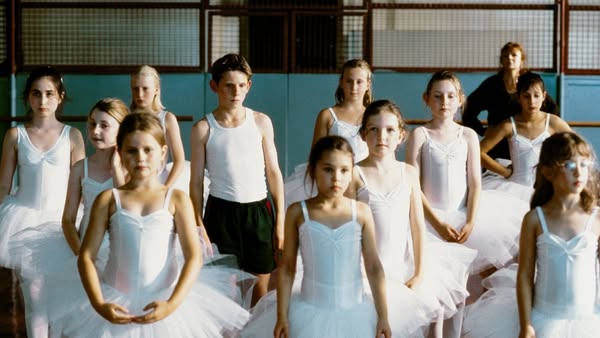Billy Elliot (2000)

Billy Elliot is a poignant and inspiring film that has left a lasting impact on audiences since its release in 2000. Set against the backdrop of a working-class town in Northern England during the 1984 miners’ strike, the film tells the story of an 11-year-old boy who discovers his passion for ballet, defying societal expectations and familial pressures in the process.
At its core, Billy Elliot is a coming-of-age story that explores themes of identity, ambition, and the struggle for self-expression. The protagonist, Billy, played brilliantly by Jamie Bell, is initially introduced as a boy who is expected to conform to traditional masculine norms, following in the footsteps of his father and brother, both miners. However, as he secretly attends ballet classes, he discovers a world that resonates with his true self, igniting a fierce desire to pursue his dream of becoming a dancer.

The film captures the stark contrast between Billy’s aspirations and the harsh realities of his environment. His family, grappling with economic hardship and the impact of the miners’ strike, initially struggles to understand his passion for ballet. This conflict is poignantly portrayed through the character of Billy’s father, played by Gary Lewis, who embodies the traditional values of masculinity and the weight of familial expectations. The tension between Billy’s dreams and his father’s beliefs serves as a powerful narrative device, illustrating the broader societal issues of class struggle and gender roles.

One of the film’s most compelling aspects is its exploration of relationships. Billy’s bond with his supportive dance teacher, Mrs. Wilkinson (played by Julie Walters), becomes a central theme. She recognizes his talent and encourages him to audition for the Royal Ballet School, serving as a mentor and guiding light in his journey. This relationship highlights the transformative power of belief and support, as Mrs. Wilkinson becomes an ally in Billy’s quest for self-acceptance.
The film’s vibrant cinematography and engaging score enhance its emotional depth. The choreography, particularly in the dance sequences, is both expressive and dynamic, showcasing Billy’s growth as a dancer. The contrast between the gritty reality of his life and the beauty of dance creates a powerful visual narrative that resonates with viewers.
Billy Elliot transcends its specific setting and story to address universal themes of passion, resilience, and the pursuit of dreams. It challenges societal norms and encourages audiences to embrace their individuality, regardless of external pressures. The film’s message is clear: pursuing one’s passion is a courageous act, and it is essential to break free from the constraints imposed by society.

The film received critical acclaim and numerous awards, including several BAFTA Awards and an Academy Award nomination for Best Supporting Actress for Julie Walters. Its success led to a successful stage adaptation, further solidifying its place in popular culture.
In conclusion, Billy Elliot is a beautifully crafted film that resonates with audiences on multiple levels. Through its exploration of ambition, family dynamics, and the struggle for self-identity, it offers a heartfelt narrative that inspires viewers to pursue their dreams, regardless of the obstacles they face. The film stands as a testament to the power of art to transform lives and challenge societal norms, making it a timeless classic that continues to inspire generations.











